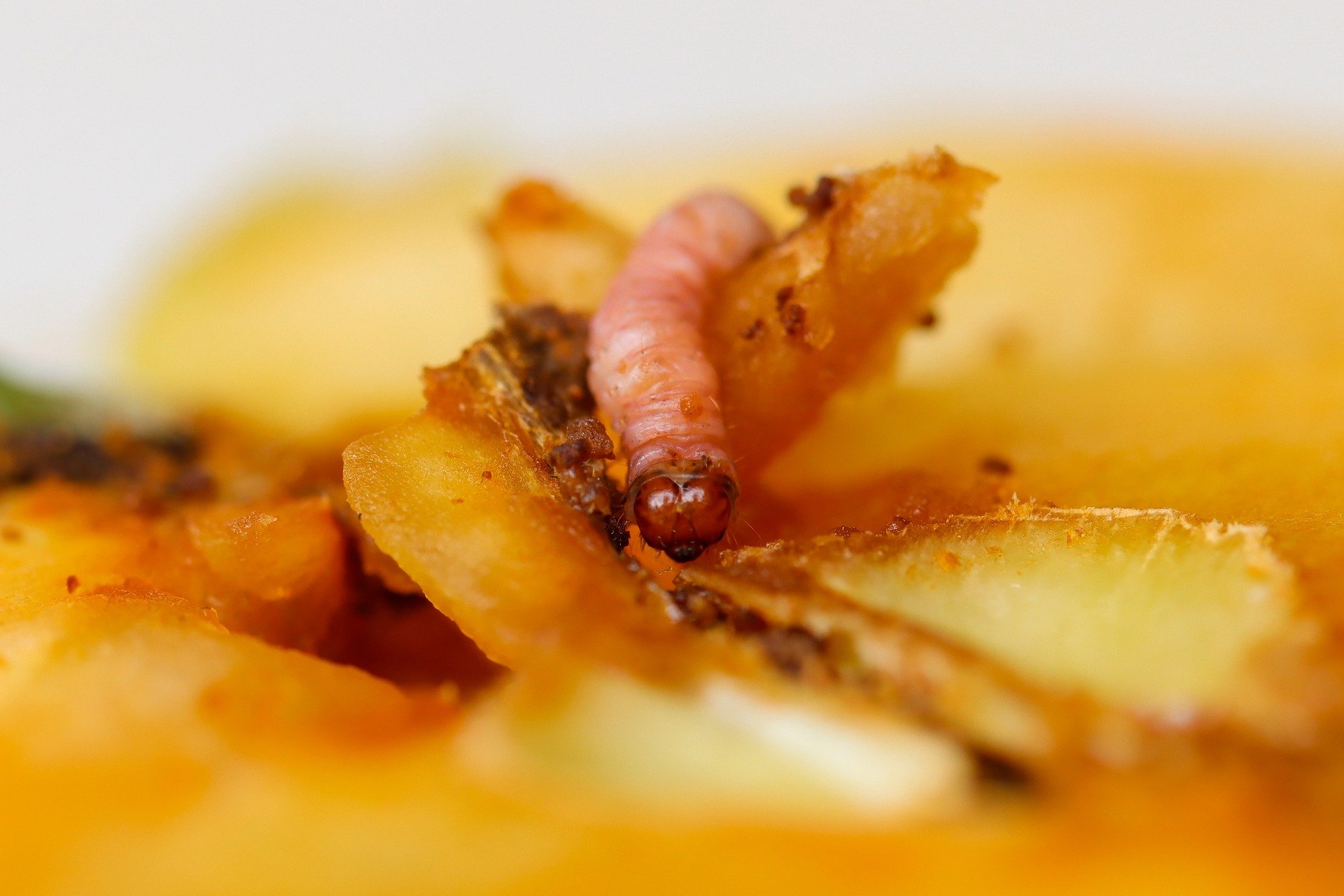Codling Moth Controls
Image by Manfred Richter from Pixabay.
What is Codling Moth?
If you have an apple or pear tree, you might have lost some of your fruit crops with tunneling worms which are the larvae of codling moth. The codling moth has many generations per growing season that must be accounted for in order to have effective control. Northeast Tree Care has tried to provide codling moth controls with an insecticidal virus called CYD-X with mixed results. At this time, we feel that effective control for codling moths on customers’ property with spraying is not economically feasible for either the customer or NE Tree Care. Within this blog, you will find DIY strategies from orchard managers and Extension offices to help keep your apples and pears unharmed.
Image by G.C. from Pixabay
What am I Looking For?
When codling moth populations are high on your property, the first thing you will notice will be the spoiled fruit from the year before. If your fruit is currently being tunneled by the larvae, you will find holes in your fruit with brown frass (sawdust) falling out of those holes. The adult moth is small with a grayish color but does not harm the apples. They lay up to 100 eggs that will eventually hatch and seek out the fruit. These strategies will focus on reducing populations before the adults can lay eggs as well as catching the larvae before it gets to the fruit. It is important to understand that the moths will lay eggs on the ground, on the trunk, and within the canopy of the tree. These controls should be installed before bloom and monitored throughout the growing season.
Traps
The first strategy is to present a more appetizing smell to the adults than the tree itself. These traps will then drown the adult moths before they can lay eggs which will reduce the codling moth population on your property. Check out this video from Stefan Sobkowiak - The Permaculture Orchard.
Here are some important points and possible changes for smaller-scale fruit producers:
Use 1/4” holes to reduce the chances of catching beneficial pollinators.
Start with whatever containers you have access to.
Hang up to 3 traps in your tree until you’ve noticed a reduced population. Be sure to monitor them throughout the growing season.
Different recipes recommended for a gallon jug: 1 cup vinegar, 1/2 cup molasses, 1/8 teaspoon ammonia, and 5 cups of water.
Clean up Debris, Cut back Apples
Clearing fallen and rotten fruit off the ground as well as other favorable egg-laying locations will help direct the adults to your traps instead. It is also important when managing an apple tree to pay attention to how many apples are growing in a clump. Cutting smaller apples from each clump off the tree early will reduce the numbers that will fall to the ground later. It also leaves room and energy for the biggest remaining apple to provide the best fruit by the end of the season.
Sticky Barriers
Sticky Barriers will help protect against any larvae that have managed to hatch from the ground and attempt to crawl up the tree. Please read the hyperlink for more specific instructions. Here are some important points and considerations:
Use a thick layer of tape or cellophane in case the sticky substance begins to flow downward in the summer heat. Make sure caterpillars are unable to crawl under the barrier.
Monitor your barrier frequently. Is it catching larvae? Are there spots where caterpillars can cross? Replace if needed.
Remove it after your apples are harvested. Tapes like this, if left on a tree for more than one growing season, will choke or girdle the trunk or branches. Consider a different location on the tree each year.
Look for Organic Pesticides
Depending on the size of a fruit tree, a homeowner may be able to spray the entire canopy with a garden home sprayer dedicated to fruit and vegetable plants. Always read and follow label instructions. Some labels state to reapply every 7-10 days.
Still need Help?
If you have tried these DIY methods for a couple of seasons and are not seeing improvement, feel free to reach out to Northeast Tree Care for other ideas or assessments. Also, the codling moth is not the only problem that apple or pear trees can have. Contacting our arborist can help with other issues you might be seeing.

